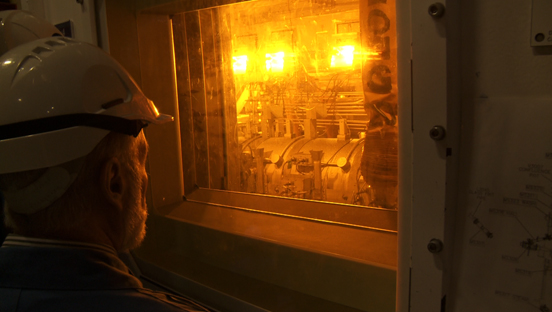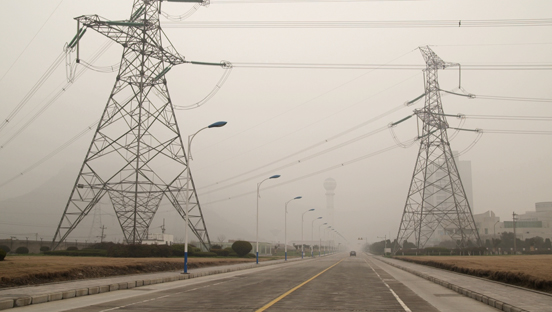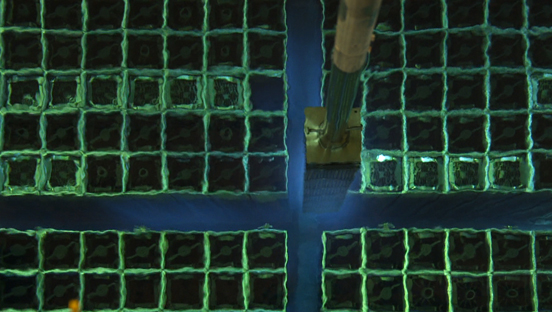Charles McCombie, 68, is a nuclear physicist and staunch advocate of nuclear energy. For the last 35 years, he has worked together with international specialists across the world to locate sites for high-level nuclear waste repositories. He believes that the commercial use of atomic energy essential for peace and prosperity.
From 1978 to 1999 he developed the high-level waste disposal programme for the Swiss Cooperative for the Disposal of Radioactive Waste, Nagra in Switzerland. In the mid-nineties, he spent eight years in the nuclear waste repository commission of the American National Academy of Sciences. As Executive Director of the Swiss organisation Arius, Association for Regional and International Underground Storage based in Baden, he has launched multi-national repository projects in Europe, Africa, Asia and South America and has advised national repository programmes, such as the Japanese repository programme of NUMO, the Nuclear Waste Management Organization of Japan for the last ten years.
Charles McCombie welcomes an open dialogue with his critics and enables the film to gain access to sealed-off locations. The experience he has gathered over many decades sums up the search for a final repository, which has been unsuccessful to date. His journey highlights problems that have so far prevented the construction of a high-level repository anywhere in the world. Originally from Scotland, Charles McCombie has lived with his family in Switzerland for 40 years. The area on his doorstep in Bözberg – a stone’s throw from the German border – is currently under review as a potential site for a nuclear waste repository.
Marcos Buser, geologist, is Charles McCombie’s fiercest opponent in Switzerland. He works as an independent researcher into nuclear waste repositories. Since the 1980s he has publicly criticised the scientific and social discrepancies of the repository strategies pursued by McCombie over the 20 years he worked for the Swiss radioactive waste disposal organisation, Nagra. He was a member of the national nuclear supervisory body until 2012. In 2012 he left the Federal Nuclear Safety Commission (NSC) in protest. As a staunch critic of atomic energy, he does not oppose plans to create repositories. He would, however, like to see them freed of the economic constraints imposed by the nuclear power industry.
Gregg Butler, ex-CEO of British Nuclear Fuels Limited (BNFL), the former operator of the UK’s nuclear power plants, and director of the reprocessing plant in Sellafield. In this role, he was involved early on in the search for repositories in the UK, which was terminated in 1997. He worked with Charles McCombie to develop the world’s first international radioactive waste repository in Australia. These plans collapsed in 1998 as a result of opposition from society. Today he works with Charles McCombie, advising the director of the British waste repository programme.
Neil Patterson, captain of the Pacific Nuclear Transport Limited, PNTL. He is in charge of shipping back high-level waste to countries that have sent their spent fuel to Sellafield in the UK for reprocessing.
Russell Jim, Director of the office for environmental restoration of the Indian Yakama Nation in Washington State, USA. His people’s experience of dealing with radioactive contamination dates back further than any other community’s. Their land is home to the Hanford Site, where plutonium was produced for the first atomic bombs from 1943 onwards. The site was designated for the construction of the world’s first radioactive waste repository. It would have become an exclusion zone for 250,000 years. Geological shortcomings and the opposition of the Yakama people and environmental campaigners prevented the realisation of the planned repository.
Steve Frishman is a technical adviser to the state government of Nevada and has campaigned against the Yucca Mountain Project since 1987. The project planned to deposit high-level nuclear waste from over 100 American nuclear power plants inside Yucca Mountain in the State of Nevada. President Obama terminated the development of the Yucca Mountain site in 2010. Steve Frishman is not unlike David fighting against Goliath – taking on 2,000 scientists working for the Department of Energy and the nuclear power industry.
Ian Zabarte, foreign minister for the Western Shoshone. Traditionally, they are the owners of Yucca Mountain, which lies on the edge of the former atomic bomb Nevada Test Site. In the 1950s the USA conducted tests on 119 atomic bombs above ground and 1,000 atomic bombs below ground until testing was terminated in 1992. He is campaigning against the Yucca Mountain Nuclear Waste Repository on behalf of his people and working to ensure that it is not re-designated as a suitable site following the provisional termination of development plans.
David Pentz, US geologist and entrepreneur, initiated the Pangea Project, which searched the globe for the simplest and least expensive site for a nuclear waste repository. As partners in the Pangea Project, Charles McCombie and Gregg Butler channelled British and Swiss funding into the undertaking. Their goal was to bring at least 20 percent of the world’s high-level nuclear waste to Australia. The project was discontinued in 1998 as a result of opposition in Australia, but David Pentz is still obsessed with his idea to this day.
Wolfgang Ehmke, spokesperson for the Lüchow-Dannenberg citizen’s initiative in Lower Saxony, Germany. He has successfully campaigned against constructing a high-level nuclear repository in Gorleben for the last 35 years. Environmental campaigners consider the site to be completely unsuitable due to presence of gas and water deep below the ground. He views the massive civil protests against the Castor transports to Gorleben as a "symbol of the failed nuclear waste policy”.
Wendell Weart, geophysicist and manager of the Waste Isolation Pilot Plant, WIPP, the world’s first deep geological repository. It is located in Carlsbad, New Mexico, and was opened for the disposal of low-level transuranic nuclear waste in 1999. Following the failure of the Yucca Mountain Project, discussions are underway in the USA about depositing all of America’s high-level nuclear waste in Carlsbad.
Bob Forrest, former mayor of Carlsbad, New Mexico. He made it possible for Wendell Weart to construct the WIPP. In return, his community received generous financial compensation. He views the failure of the Yucca Mountain Project as a godsend for Carlsbad and would also like his community to become a repository for all of the USA’s high-level radioactive nuclear waste.
Jacob Spangenberg, mayor of the community of Östhammar, Sweden, home to Forsmark nuclear power plant. The community volunteered to host a high-level nuclear repository. In 2011, the nuclear waste disposal organisation SKB submitted an application to build a high-level repository in Östhammar to the authorities. If independent experts confirm that the waste can be stored safely for 100,000 years, Östhammar could become the world’s first high-level nuclear waste repository site.
Johan Swahn, Director of the Swedish NGO Office for Nuclear Waste Review, MKG. He is a critic of the Swedish approach to high-level nuclear waste disposal, which it has followed for over 35 years. The approach involves depositing high-level nuclear waste encased in copper canisters 500 metres below the ground in wet granite rock.
Ju Wang, Head of the High-Level Waste Disposal Programme of the People’s Republic of China. He is searching for a suitable site in the Gobi Desert to construct a repository for China’s high-level nuclear waste. China plans to commission 40 reactors by 2020 and start constructing a further 18. At the proposed site, some 20 boreholes have been drilled to investigate the suitability of the ground.
Ba Gen Na, a nomad in the Chinese Gansu Province in the Gobi Desert. His herd of camels grazes on the proposed repository site, which Ju Wang and his team are currently testing to establish its suitability. Ben Gen Na is worried that his livelihood is at risk: Chinese politicians and scientists believe that this is the safest place for their planned high-level nuclear waste repository.






